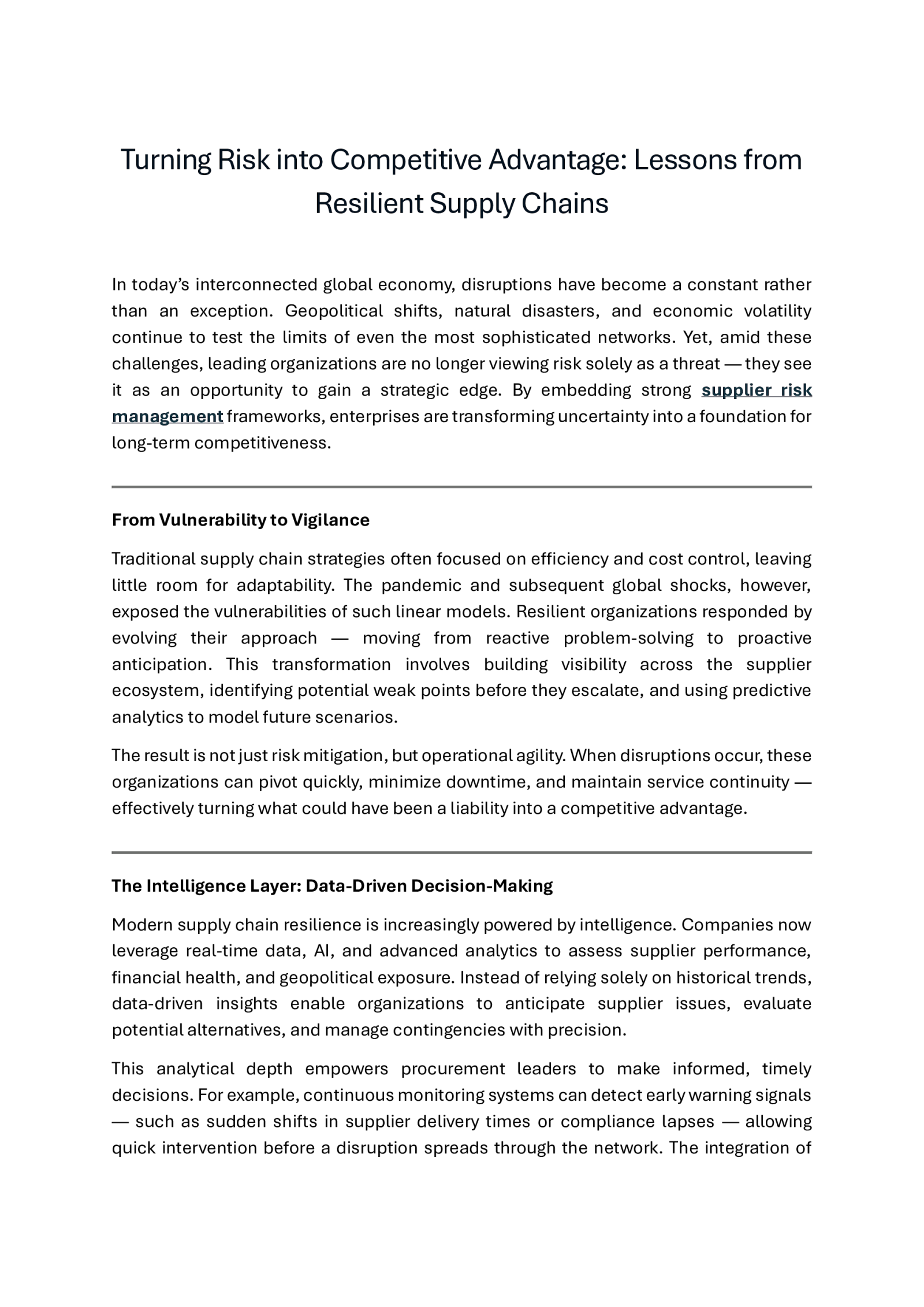Turning Risk into Competitive Advantage: Lessons from Resilient Supply Chains In today’s interconnected global economy, disruptions have become a constant rather than an exception. Geopolitical shifts, natural disasters, and economic volatility continue to test the limits of even the most sophisticated networks. Yet, amid these challenges, leading organizations are no longer viewing risk solely as a threat — they see it as an opportunity to gain a strategic edge. By embedding strong supplier risk management frameworks, enterprises are transforming uncertainty into a foundation for long-term competitiveness. From Vulnerability to Vigilance Traditional supply chain strategies often focused on efficiency and cost control, leaving little room for adaptability. The pandemic and subsequent global shocks, however, exposed the vulnerabilities of such linear models. Resilient organizations responded by evolving their approach — moving from reactive problem-solving to proactive anticipation. This transformation involves building visibility across the supplier ecosystem, identifying potential weak points before they escalate, and using predictive analytics to model future scenarios. The result is not just risk mitigation, but operational agility. When disruptions occur, these organizations can pivot quickly, minimize downtime, and maintain service continuity — effectively turning what could have been a liability into a competitive advantage. The Intelligence Layer: Data-Driven Decision-Making Modern supply chain resilience is increasingly powered by intelligence. Companies now leverage real-time data, AI, and advanced analytics to assess supplier performance, financial health, and geopolitical exposure. Instead of relying solely on historical trends, data-driven insights enable organizations to anticipate supplier issues, evaluate potential alternatives, and manage contingencies with precision. This analytical depth empowers procurement leaders to make informed, timely decisions. For example, continuous monitoring systems can detect early warning signals — such as sudden shifts in supplier delivery times or compliance lapses — allowing quick intervention before a disruption spreads through the network. The integration of


